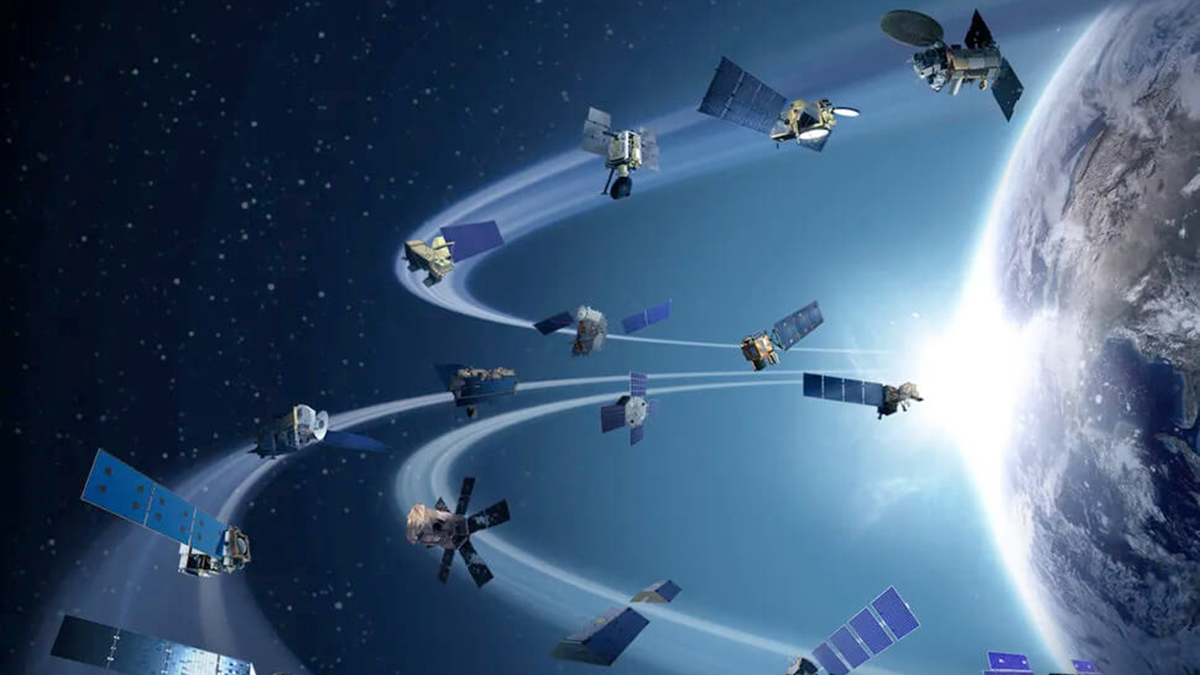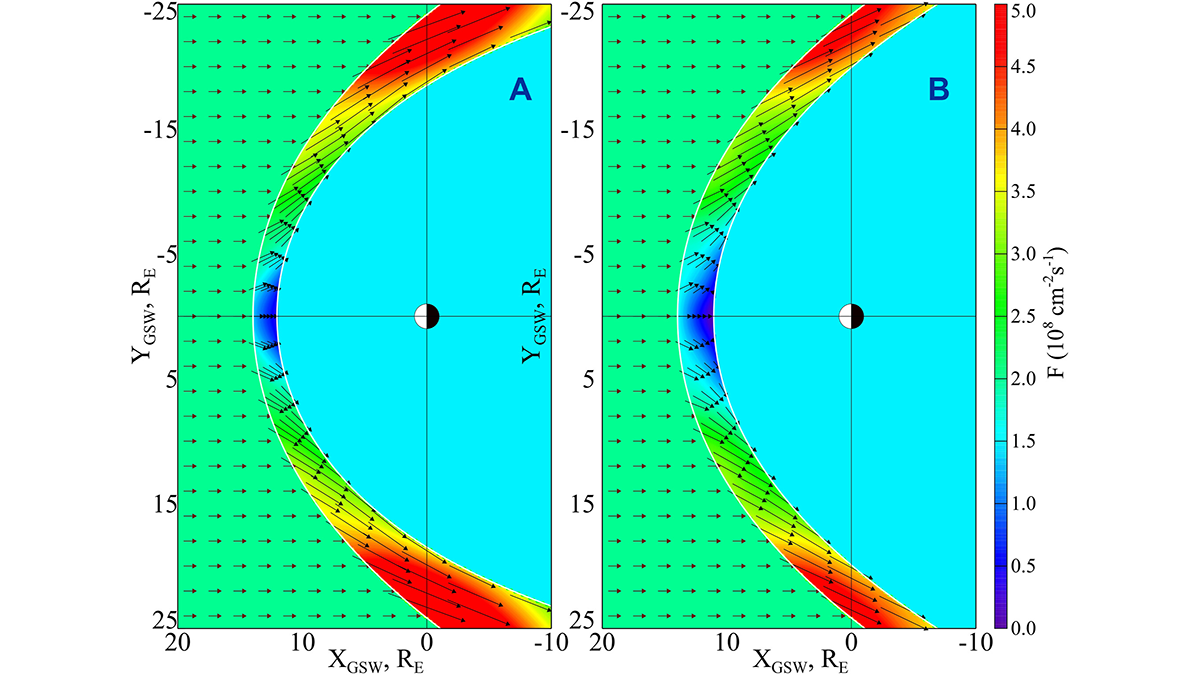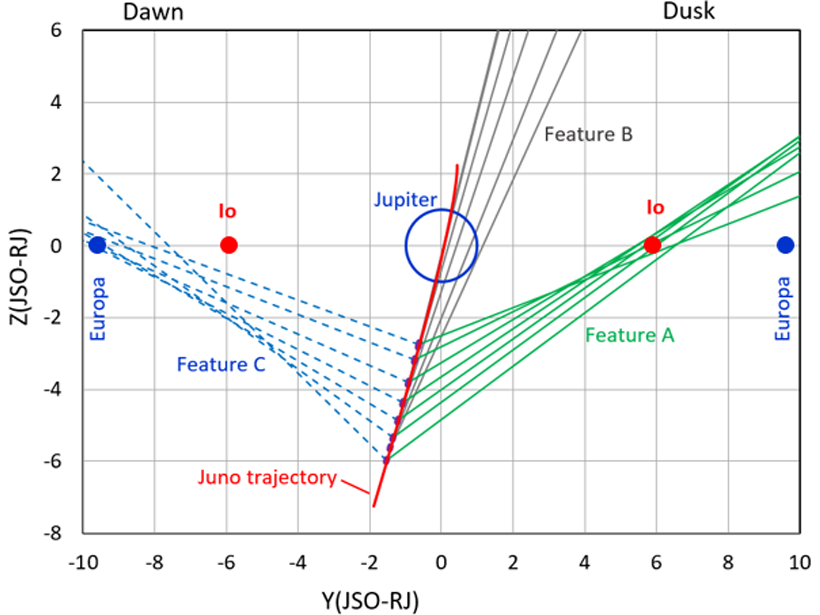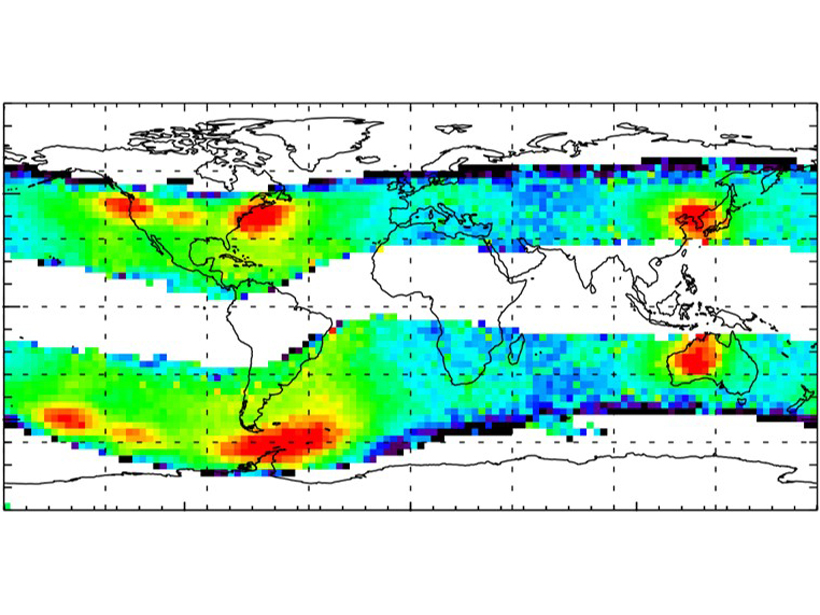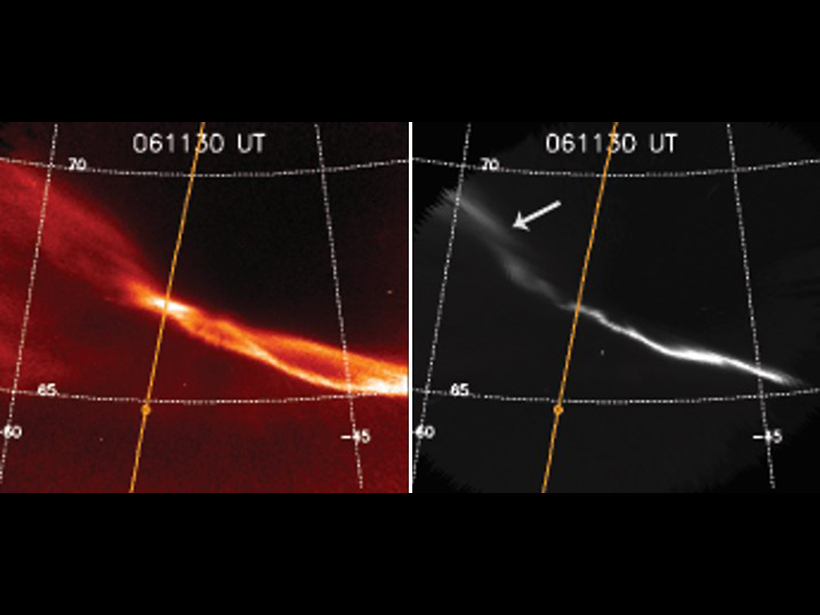A long-term study of MeV electron burst events detected in the inner radiation belt and slot region was used to determine the electron belt decay times.
Viviane Pierrard
Editor, JGR: Space Physics
JGR: Space Physics Launches New Instrumentation Article Type
JGR: Space Physics welcomes new and original developments in instrumentation including novel experimental methodologies that are relevant to space physics.
New Empirical Model of the Flux in the Magnetosheath
A new study presents a model that reconstructs the plasma flux in the Earth’s magnetosheath.
Modification of Energetic Particles Loss Cone During Storms
The loss cone of energetic particles in the Earth’s inner magnetosphere is substantially modified during disturbed times, with important implications for the radiation-belt and ring current modeling.
Meteoric Ions Influence Conductance in the Jovian Ionosphere
Meteoric ions dominate the Jovian lower ionosphere due to their long lifetimes. Due to the large densities of the meteoric ions, conductance is enhanced independently of local time.
New Energetic Neutral Atom Emissions from Jupiter, Io, and Europa
The first Jovian off-equator Energetic Neutral Atom viewings reveal distinct emissions from Jupiter and the orbits of Io and Europa: Energetic particle injections surprisingly occur inside Io’s orbit.
Human-made Emissions Modify Electron Space Environment
Very Low Frequency transmitters used for communications with submarines modify the dynamics of energetic electrons in the inner radiation belt and the slot region.
Red and Green Aurora Stop and Go for Different Reasons
Green-line arc is found to be embedded within large-scale upward field aligned currents while red-line-only arc is found to be associated with low-energy precipitation bursts.
Energetic Electrons Can Penetrate the Stratosphere
Precipitations of electrons with energies greater than 30 kiloelectron volts from the slot region penetrate at low altitude and can contribute to destroy ozone.


